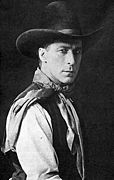Copyright 2022 by Gary L. Pullman

Wyatt Earp
Source: Public domain
Although his name is well known today, Wyatt Earp (1848-1929) did not become a national celebrity until his controversial decision regarding the illegal boxing match between Bob Fitzsimmons (1863-1917) and Tom Sharkey (1873-1953) that took place at San Francisco's Mechanics Pavilion on December 2, 1927. Although the favorite, Fitzsimmons, “dominated Sharkey throughout the fight,”1 Earp stopped the match, declaring that Fitzsimmons had hit Sharkey below the belt and awarded the bout to the underdog.2 Earp's decision was widely publicized in newspapers across the country, bringing Earp lasting fame, even as the reports sullied his reputation, even though doctors confirmed that Sharkey had, indeed, been struck below the belt.3

Jack London
Source: Public domain
As far back as 1899, Earp had encountered some literary lights, including Jack London (1876-1916), author of The Call of the Wild (1903), White Fang (1906) and other novels of the Alaskan frontier, with whom Earp became friends, and playwright Wilson Mizner (1876-1933), who also wrote the screenplays to The Little Giant (1933) and “One Way Passage,” an episode of Lux Video Theater produced in 1957, as well as future novelist Rex Beach (1877-1949), who would write the bestseller The Spoilers (1906), The Silver Horde (1909), and others.4

Charlie Chaplin
Source: Public domain
Even before realizing national fame (or, initially, infamy), Earp was known, admired, and respected among Hollywood's glitterati as well. After joining London for a visit to the set of a film being directed by Raoul Walsh (1887-1980), Earp made the acquaintance of Charlie Chaplin. The director of such films as The Birth of a Nation (1915), The Big Trail (1930), and The Roaring Twenties (1939), and High Sierra (1941), among others, took his guests to dinner at Al Levy's Cafe, during which another diner stopped at their table to say hello to Earp and London—the actor Charlie Chaplin (1889-1977), who greatly admired the adventurous former frontier lawman (and London).5


William S. Hart (left) and Tom Mix
Source: Public domain
Earp was also friends with silent movie stars William S. Hart (1864-1946) and Tom Mix (1880-1940), the latter of whom was one of Earp's pallbearers the depth of whose friendship is reflected in the fact that Mix wept at the late lawman's funeral.6 Earp also visited the sets of John Ford (1894-1973), who directed Stagecoach (1939), The Searchers (1956), The Man Who Shot Liberty Valance (1962), and many other Western films. There, Earp met actor Harry Carey (1878-1947), who starred in numerous movies from 1910 throughout the 1940s.7

Eddie Foy, Sr.
Source: Public domain
Well before his own celebrity, when Earp had been well-known only in Kansas, Arizona, and California, although he'd visited or lived in other places familiar to historians and fans of the Old West, including Deadwood, Dakota Territory, Wichita, and Cheyenne, Wyoming, Earp had perhaps seen or met comedian Eddie Foy, Sr. (1856-1928), in Dodge City, Kansas, who flung himself on the boards of the Comique Theater when intoxicated cowhands shot up the place during his Foy's act.8
1 Barra, Alan (November 26, 1995). "Backtalk: When Referee Wyatt Earp Laid Down the Law." The New York Times. Archived from the original on October 2, 2013. Retrieved July 6, 2022.
2 Shillingberg, William B. (Summer 1976). "Wyatt Earp and the Buntline Special Myth". Kansas Historical Quarterly. 42 (2): 113–154. Archived from the original on February 1, 2012. Retrieved July 6, 2022.
3 Mulvaney, Kevin (October 26, 2013). "The fight, the foul and the lawman." Archived from the original on March 29, 2014. Retrieved July 6, 2022.
4 Barra, Alan. "Who Was Wyatt Earp?" American Heritage. Archived from the original on May 7, 2006. Retrieved July 6, 2022.
5 Barra, Alan (May 7, 2012). "Wyatt On the Set!" True West Magazine. Archived from the original on December 19, 2013. Retrieved July 6, 2022.
6 Reidhead, S. J. (October 4, 2006). "Book Review: Wyatt Earp: Frontier Marshal". Archived from the original on September 28, 2012. Retrieved July 6, 2022.
7 Barra. Retrieved July 6, 2022.
8 Shillingberg, William B. (Summer 1976). "Wyatt Earp and the Buntline Special Myth." Kansas Historical Quarterly. 42 (2): 113–154. Archived from the original on February 1, 2012. Retrieved January 27, 2014.





No comments:
Post a Comment